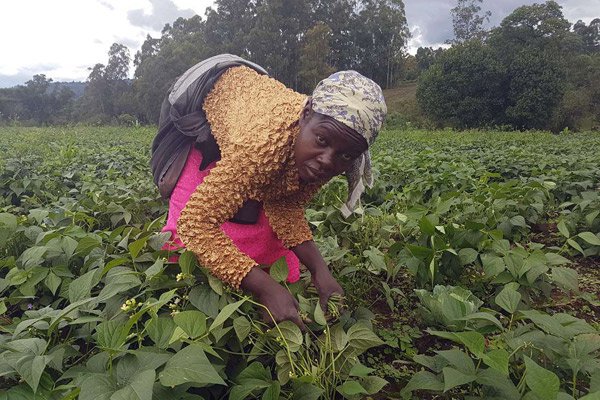
Beans farming in Kenya. Phpto courtesy.
Kenyan farmers can cheaply control bean stem maggot, a disease which attacks beans stems further blocking the movement of water and nutrients from the roots to the upper parts of the plant causing wilting and death of plants by use of farmyard manure and planting early before the rains.
The pest is rampant semi-arid areas of eastern Kenya such as Machakos, Makindu and Kajiado where it causes yield losses of between 50 to 100 per cent according to the Kenya Agricultural and Livestock Research Organization (KALRO).
The leaves of damaged plants show mining tracks where the maggots feed. The lower parts of the stems become dry, swollen and cracked. Attack by this pest often causes death of young bean plants.
According to a research by KALRO, the pest can be controlled by planting early before the rains start. Apply farmyard manure at planting by putting one handful in each planting hole. This makes the plant strong and able to recover from damage.
RELATED ARTICLE: Green beans to the rescue of Kenyan farmers
RELATED ARTICLE: Project breeds high value beans for canners
RELATED ARTICLE: Heat tolerant beans fight climate change
Ridge plants with soil using a hand hoe or oxen plough. Ridging helps damaged plants form new roots and recover from pest damage. Alternatively apply one bottle-top of DAP fertilizer between every two plants along each row (Fertilizer should only be used when the season is good).
You can also treat bean seeds using murtano. In this, mix one packet of murtano (10 gm) with three Kimbo (one kg) tins of beans and ensure you protect your hands with gloves or plastic bags. Remove remains of bean stems from the field after harvest as the pest may hide in the old stems and attack young beans in the following season.
According to the Economic Survey 2018 report released by the Kenya National Bureau of Statistics in April this year, production of beans increased by 16 per cent from 8.1m bags in 2016 to 9.4m bags in 2017.
















Comments powered by CComment